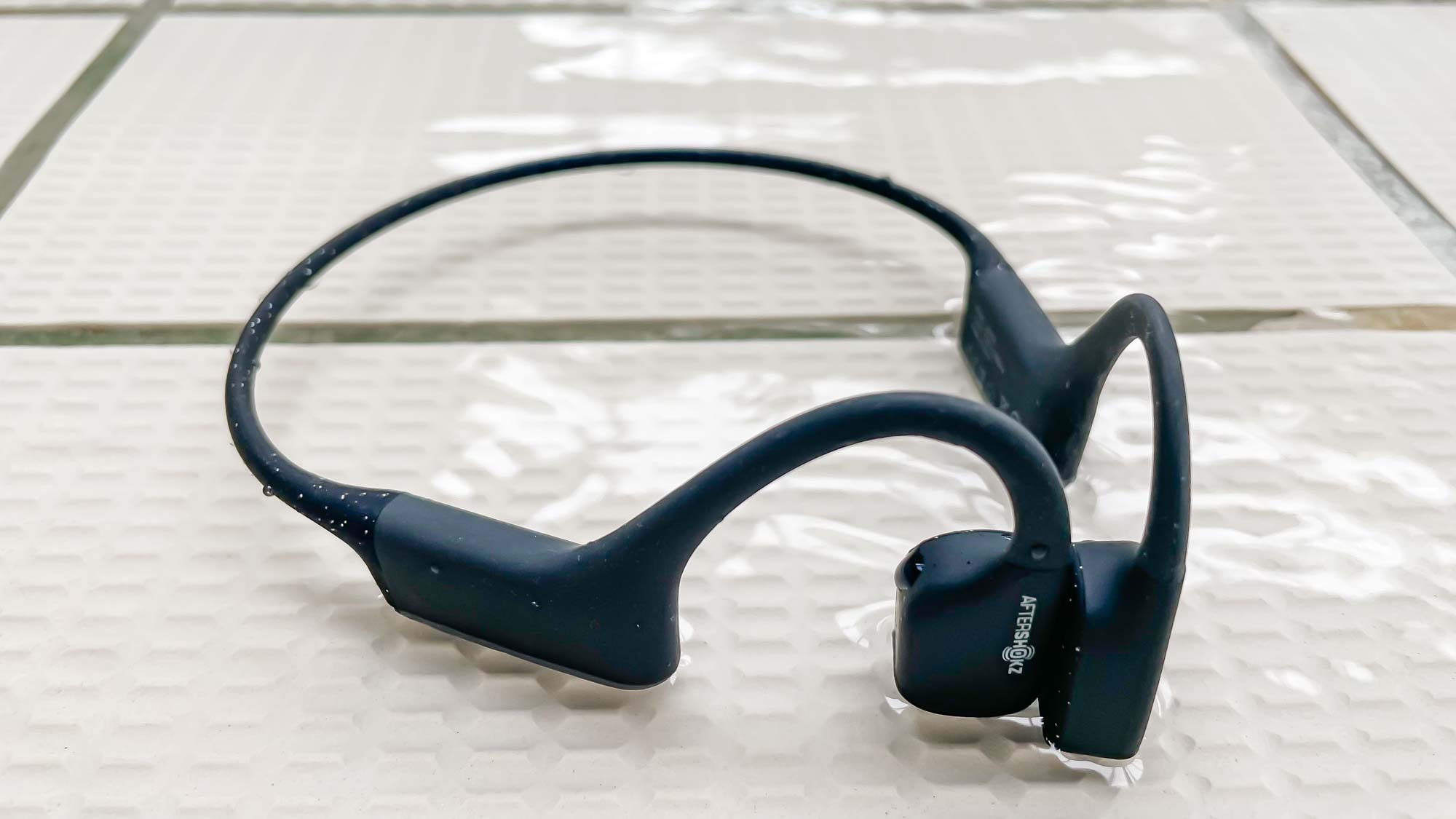I’ve been swimming with the Shokz Openswim headphones — and they’ve revolutionized my workouts

I’ve always been skeptical about swimming headphones and I’m not sure why. Maybe it’s because in 2023, I don’t have any mp3 music files to upload onto them (if you’re new to the swimming headphone game like I was, you’ll need to know that Bluetooth doesn’t work in water), or maybe it’s getting over that fear of putting technology in a swimming pool. Either way, I’ve always trained in the pool in silence, until now.
I’m currently five months pregnant, and as a marathon runner, my bump is starting to slow down and shorten my runs as it grows. Instead, I’ve turned to the pool, where I can happily swim without the weight on my pelvis slowing me down. It’s important to note here while exercising when pregnant is recommended, you should always check with your doctor or midwife if you are unsure.
As my time in the pool increased, I found I missed listening to music, podcasts, and audiobooks like I do when running, so I dug a pair of Shokz Openswim headphones out of the cupboard, where they’d sat, unopened, for a long time, and I’ve not looked back. Read on to find out more.
I’ve been swimming with the Shokz Openswim headphones — here’s what I love
The sound quality
The Openswim bone conduction headphones work by transmitting the sound waves along your cheekbones, rather than through the air. This is beneficial when you’re in the pool, as it means you can still hear the lifeguard’s whistle and be fully aware of your surroundings.
I was surprised at how clearly I could hear both my music and podcast conversation with my face in the water — there are two different modes on the headphones, one specially designed for the water.
The swimming mode offered a boost for voice-based podcasts where the bump in volume and clarity felt most noticeable. The General mode was versatile enough to work for different types of audio both in and out of the water.
The battery life
To charge the Openswim headphones, you have to clip one side of the headphones into a small box built that's on the end of the charging cable — you won’t want to lose this charger, as it’s not your run-of-the-mill cable.
Get instant access to breaking news, the hottest reviews, great deals and helpful tips.
Shokz estimates you’ll get around eight hours of playback from a single charge, although I’d say this was a little optimistic. That said, any pair of headphones that stores music as well as playing it is likely to have a shorter battery life.
The design
Another plus was that these headphones stayed put in the water, so much so, I’d forget I was wearing them completely. They weigh just 1.05 ounces (around 30g) and I could easily slip them underneath my swimming cap in the water. I also found they didn’t move, even when pushing off from the side of the pool, and didn’t get tangled in my hair on sessions where I’d forgotten to pack my cap.
The headphones came with a handy carry-pouch, to stop them from getting lost in my swim bag and accidentally chucked in the washing machine with my towel. They also came with a set of swim ear plugs, which I didn’t need to use, but I imagine they help enhance the sound quality if you’re swimming in a particularly noisy pool.
The headphones themselves were easy to use in the pool — Shokz placed three physical buttons on the underside of the right side of the headphones to turn on the headphones and adjust the volume up and down.
There’s also a smaller ‘mode’ button that allows you to switch between the swimming and general modes. As you can’t connect the headphones to your phone to see the battery level, or what mode you’re in, there’s audio feedback to tell you when you’ve switched modes, powered your headphones on or off, and a battery life status.
I’ve been swimming with the Shokz Openswim headphones — here’s what I don’t love
Remembering to upload files
This is an obvious one, and a problem you’d encounter with any of the best swimming headphones on the market, but remembering to upload files onto my headphones before leaving the house was a hassle. I’m nit-picking here, of course. The headphones have 4GB of storage and the ability to transfer over MP3, WAV, WMA, AAC files and you do that using the same proprietary cable used to charge the headphones. It is a little fiddly, especially in this day and age, but it’s the price you pay for listening to music as you swim.
Overall, I’ve been impressed with these headphones and I’d recommend them to anyone looking to beat the boredom as you lap your local pool. Check out the other headphones that made our best waterproof headphones list.
More from Tom's Guide
- Running vs swimming: Which burns more calories?
- Is swimming better for you than cycling?
- The best swimming goggles to buy in 2023

Jane McGuire is Tom's Guide's Fitness editor, which means she looks after everything fitness related - from running gear to yoga mats. An avid runner, Jane has tested and reviewed fitness products for the past five years, so knows what to look for when finding a good running watch or a pair of shorts with pockets big enough for your smartphone. When she's not pounding the pavements, you'll find Jane striding round the Surrey Hills, taking far too many photos of her puppy.
